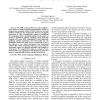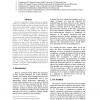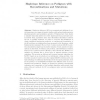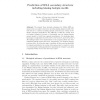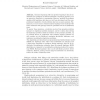BIBM
2010
IEEE
13 years 9 months ago
2010
IEEE
We have recently found that the computation time of homology-based subcellular localization can be substantially reduced by aligning profiles up to the cleavage site positions of s...
BIBM
2010
IEEE
13 years 9 months ago
2010
IEEE
The 1000 Genome project has made available a large number of single nucleotide polymorphisms (SNPs) for genome-wide association studies (GWAS). However, the large number of SNPs ha...
BIBM
2010
IEEE
13 years 9 months ago
2010
IEEE
Being able to reproduce experiments is the cornerstone of the scientific method. Software experiments are hard to reproduce even if identical hardware is available because externa...
BIBM
2010
IEEE
13 years 9 months ago
2010
IEEE
BIBM
2010
IEEE
13 years 9 months ago
2010
IEEE
16S rRNA gene profiling has recently been boosted by the development of pyrosequencing methods. A common analysis is to group pyrosequences into Operational Taxonomic Units (OTUs),...
WABI
2010
Springer
13 years 9 months ago
2010
Springer
Abstract. Haplotype Inference (HI) is a computational challenge of crucial importance in a range of genetic studies, such as functional genomics, pharmacogenetics and population ge...
WABI
2010
Springer
13 years 9 months ago
2010
Springer
Although many supertree methods have been developed in the last few decades, none has been shown to produce more accurate trees than the popular Matrix Representation with Parsimon...
WABI
2010
Springer
13 years 9 months ago
2010
Springer
Abstract. We present three heuristic strategies for folding RNA sequences into secondary structures including kissing hairpin motifs. The new idea is to construct a kissing hairpin...
WABI
2010
Springer
13 years 9 months ago
2010
Springer
Abstract. Genome sequencing will soon produce haplotype data for individuals. For pedigrees of related individuals, sequencing appears to be an attractive alternative to genotyping...
WABI
2010
Springer
13 years 9 months ago
2010
Springer
The double cut and join (DCJ) operation, introduced by Yancopoulos, Attie and Friedberg in 2005, allows one to represent most rearrangement events in genomes. However, a DCJ cannot...

